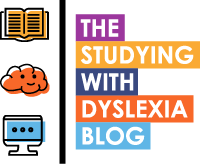Since I was nine years old and diagnosed with dyslexia, certain things in life have fascinated me, with technology being one of them. My earliest memory of using technology was in Year Six, when I first saw a computer in the school library that had been obtained through Asda’s school vouchers scheme.
The advancement of technology to support those with dyslexia and other neurodiverse conditions has been nothing short of remarkable. Today, I see these advancements as powerful tools that have transformed how I approach daily tasks.
What is AI?
Artificial Intelligence (AI) refers to machines and computer systems that mimic human intelligence to perform tasks such as learning, problem-solving, and understanding language. AI can quickly process large amounts of data, identify patterns, and adapt to improve its performance over time. It is used widely to assist with everything from content creation to accessibility solutions, particularly for individuals with learning differences.
For me, the ability to ask AI to alter and update something within seconds, then review and refine it by reading or listening to the output, has become the ultimate tool for creating content, developing resources, and solving problems. AI has integrated itself into my daily life, enhancing both productivity and growth.
Over the past year, I have primarily used AI for content creation. I often dictate content, then ask the AI to update it by correcting punctuation, refining word choices, and ensuring the flow remains intact. While AI sometimes misunderstands my intent, requiring me to rephrase or adjust my prompts, the essence of what I’ve created remains.
Learning how to effectively prompt AI has been one of my biggest challenges. In the early days, using simple phrases like “please update” would produce results, but they weren’t always in my writing style or tone. Sometimes, the AI would add unnecessary embellishments. However, in the last six months, updates to tools like ChatGPT have significantly enhanced the experience, especially for those with dyslexia and other neurodiverse traits. The ability to use AI for everyday tasks has become an invaluable asset.
For instance, a business task that once took me half an hour—such as creating email content and converting it into HTML with specific fonts and formatting—now takes only five minutes with the help of AI. It produces professional-looking results in a fraction of the time, making it easier to focus on the task at hand.
One of the greatest benefits AI offers me is time-saving and the immediacy of seeing results. It allows me to stay in the moment while interacting with the content I create, which helps me maintain focus. While some level of oversight is still required to ensure accuracy, the overall process is far more efficient.
However, there are downsides. One challenge is ensuring originality, as AI-generated content can sometimes feel generic. Additionally, I find that AI makes it so easy to generate content that I often produce more than I know what to do with, which can be overwhelming.
AI is here to stay. We must learn to embrace its benefits while understanding how it works and how to use it productively. By doing so, we can avoid potential pitfalls and maximise its positive impact on our lives.

